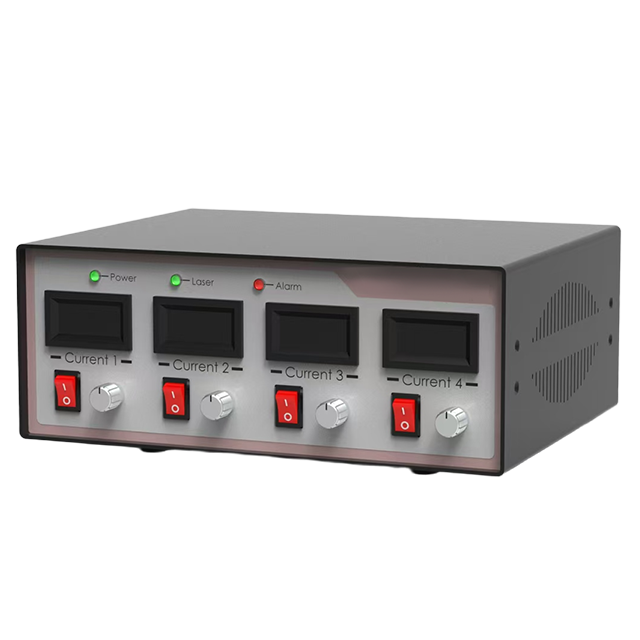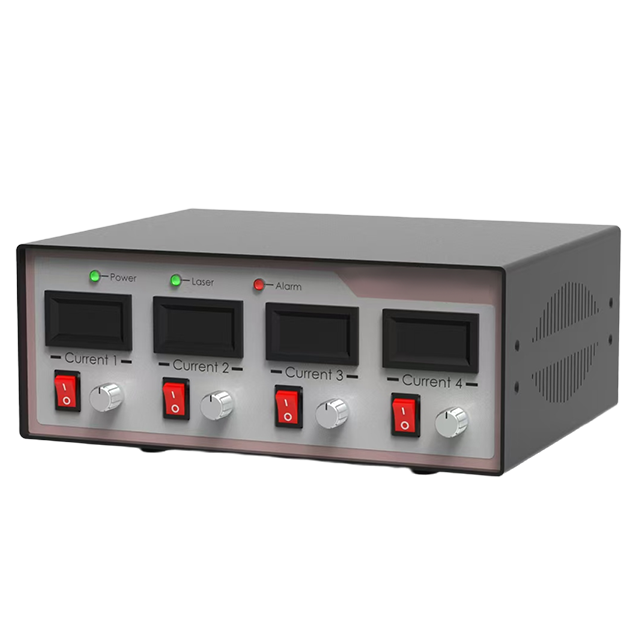| Quantity | Price(USD) | Ship Date |
|---|---|---|
| 1-10 | TBD | |
| 10- | TBD |

Four-In-One Fiber-Coupled Laser System
Based on wavelength characteristics and parameter matching scenarios:
Optogenetic experiments: The 405nm near-ultraviolet band can activate specific light-sensitive channel proteins (such as certain rhodopsin proteins), and 450nm blue light can activate commonly used light-sensitive proteins like ChR2, which is suitable for research on neural cell light control in universities and research institutions.
Multicolor fluorescence imaging: 450nm (blue light), 520nm (green light), and 638nm (red light) can respectively excite different fluorescent dyes (such as FITC, Cy3, Cy5) for multi-label fluorescence imaging of biological tissues, suitable for medical research and cell biology research scenarios.
Near-ultraviolet-visible light material detection: 405nm near-ultraviolet can be used for material ultraviolet absorption spectrum analysis, and 450~638nm visible light can be used for material reflection/emission spectrum detection, suitable for characteristic research on photosensitive materials and semiconductor materials in material science laboratories.
- Product image is for representative purposes only and not reflective of every product available on this page.
Configured Specifications
| Central Wavelength | (405、450、520、638)±3 nm | Output power | ≥20mW per channel |
| Fiber optic types | Single-Mode Fiber | Fiber optic interface | FC/SMA905/SC/ST (Optional) |


